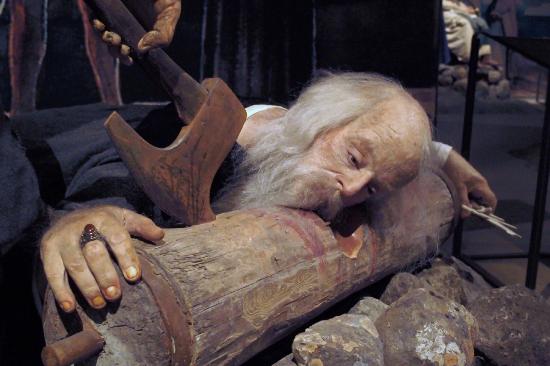. . . also brought the Protestant Reformation to Iceland.
Recently I’ve had a chance to travel to Iceland for the first time. The small island republic in the middle of the Atlantic is best known for its beguiling landscape: a plethora of active volcanoes (one now erupting), glaciers, lava beds, waterfalls, thermal baths, geysers, fjords, and more.
But the history of Christianity there equally fascinates—and disturbs.
Iceland was the last “European” land mass to convert to Christianity. Irish hermits arrived there as early as the 700s to seek out a solitary life of prayer. But scant evidence remains of these pious squatters. Official Christianization began in the year 1000 when the (Christian) King of Norway enjoined the new faith over the old Norse gods. The suggestion divided the Icelandic chieftains. Resolution came at “parliament” (Althing), the annual summer meeting of all chieftains at Thingvellir where matters of common concern were discussed and justice meted out. Remarkably, the chieftains agreed to have the “Lawgiver,” one Thorgeir of Ljósavatn, consider the matter and make a decision binding on the whole island. According to tradition, Ljósavatn retired to his booth and lay under a hide for a whole day and night to meditate on the knotty question. He then rose and gave a speech in which he said that it would be intolerable for the country to be divided over religion and that the new faith should be accepted. But he also offered two caveats: the old gods could still be worshipped privately and the eating of horseflesh and the exposure of infants (two criticisms made by Christians) should be allowed to continue. With this verdict, conversion took place as a peaceful and almost unique historical event. Eventually, two bishoprics were set up: one at Skálholt in the south and one at Hólar in the north.
Fast-forward five hundred years to the time of the Reformation. At this time, Iceland was under the colonial rule of the Kingdom of Denmark, which had embraced the still newer faith emanating from Wittenberg, Saxony. What was good for the motherland was good for her colonies, the king reasoned, and top-down efforts to Protestantize all of Iceland got underway. Sometimes this went peacefully, but it also encountered stiff resistance—as anything imposed by sheer force by a distant ruler might elicit.
The last hold-out was the Bishop of Hólar, Jón Arason. With a band of armed followers, he and two of his sons, Ari and Björn (celibacy was not Arason’s strong suite), defied the Danish crown until 1550, at which time they were captured and brought to Skálholt, where the Reformation had found more fertile ground. Fearful of Arason’s popularity and impatient to wait on official instructions from Copenhagen, the Danes and Protestant Icelanders who had captured the three men decided to put them to death. Records indicate that it took one blow of the axe to sever the head of Ari, three to do the same for Björn, and no less than seven to finish off their father—a stiff-necked man in every respect.
As Arason’s head rolled, the last bulwark against Lutheranism was removed. And, therefore, today, article 62 in Iceland’s Constitution reads: “The Evangelical Lutheran Church shall be the State Church in Iceland and, as such, it shall be supported and protected by the State.” Despite this fact, Arason became something of an Icelandic hero, not so much for his religious proclivities but because in the nineteenth century–when Iceland was still under Danish rule–he seemed an apt symbol for Icelandic national independence (which fully came about only in 1944).
Permit me to draw two lessons from this bloody tale. First, while the Reformation today is widely seen as the origins of modern liberalism and freedom of conscience, people in the sixteenth century patently did not experience it this way. Throughout northern Europe, the Reformation was often imposed by royal fiat and resistance was crushed. Or else, absent a powerful sovereign, violence occurred or civil war broke out—e.g., the St. Bartholomew’s Day Massacre or the English Civil War. Second, unlike in math, many things in history simply do not add up. One would think that a predominantly Lutheran country would think poorly of its last Catholic bishop. But this is not so: Lutheranism became ensconced in Iceland even as the defiant bishop emerged as a national hero.
Go figure. And consider visiting Iceland.












